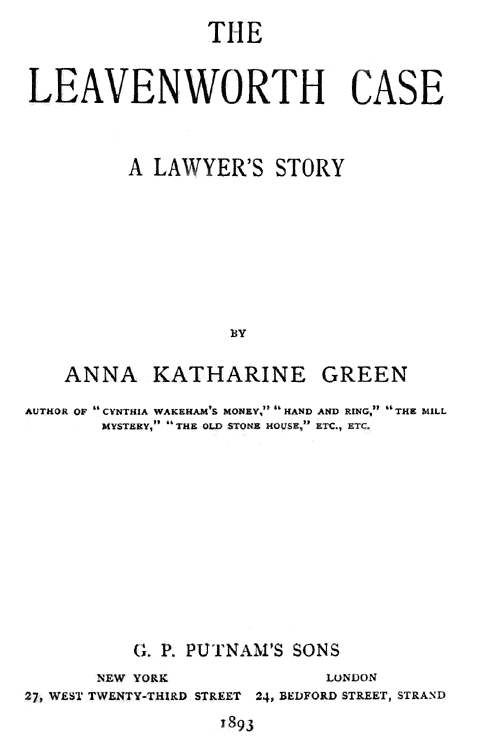
Yet her work virtually disappeared soon after her death in 1935.

Auguste Dupin appeared only in three short stories.)Īnna Katherine Greene The Leavenworth Case was a million-plus seller, and Green went on to write an additional 35 novels over 45 years. ( Edgar Allan Poe’s archetypal detective C. Featured in some dozen of Green’s later books, Gryce claims the mantle of the first recurring detective in a series of novels. Green sets a brisk pace (at first) with the death of Horatio Leavenworth, followed by a coroner’s inquest that dramatically lays out the clues and suspects and introduces the reader to master detective Ebenezer Gryce. These include a body discovered in a locked room, a changed will, ballistics, a crime scene map, an incriminating letter, a second murder, and a daring denouement. Particularly striking are the many detective story conventions that appeared in the novel without traceable antecedents. Green’s first novel predates the first appearance of Sherlock Holmes by nine years, yet it seems much more modern. So cleverly plotted is it that members of the Pennsylvania Legislature insisted that Anna Katharine Green must be a pseudonym for some man, because “the story was manifestly beyond a woman’s powers.” Just goes to show you that government has always been populated by idiots.

Yale Law School, among others, assigned it to its students to demonstrate the snares associated with circumstantial evidence.

Wilkie Collins, Arthur Conan Doyle, and Agatha Christie admired it. The Leavenworth Case (1878) by Anna Katharine Green is a milestone of the genre. murdered shot through the head by some unknown person while sitting at his library table.” Thus begins a mystery novel once sensationally popular and now, mystifyingly, almost completely unknown.


 0 kommentar(er)
0 kommentar(er)
